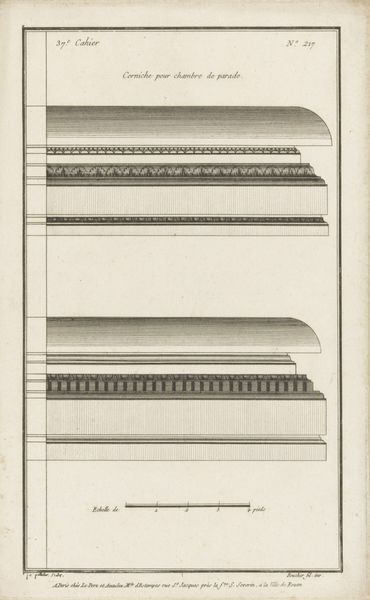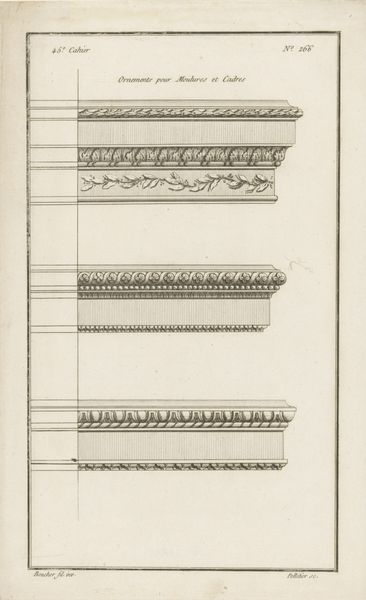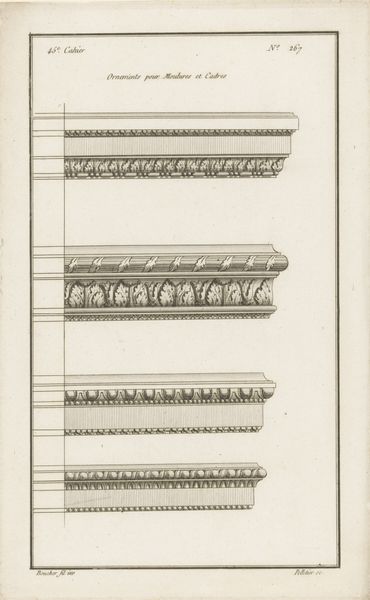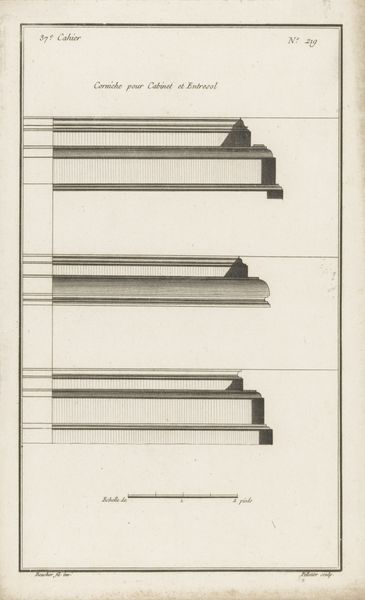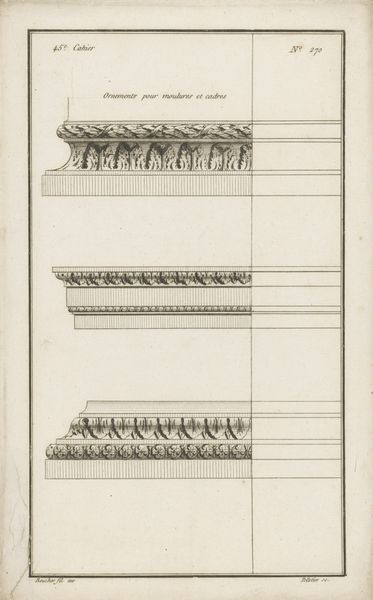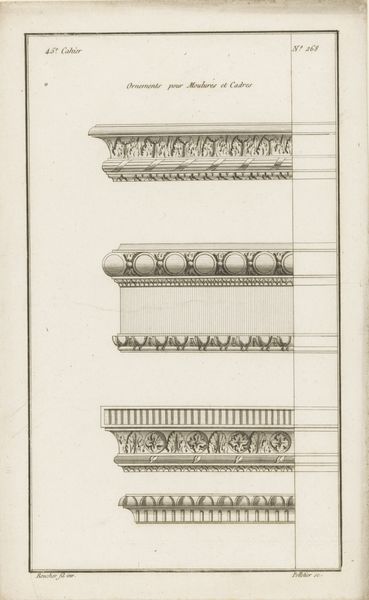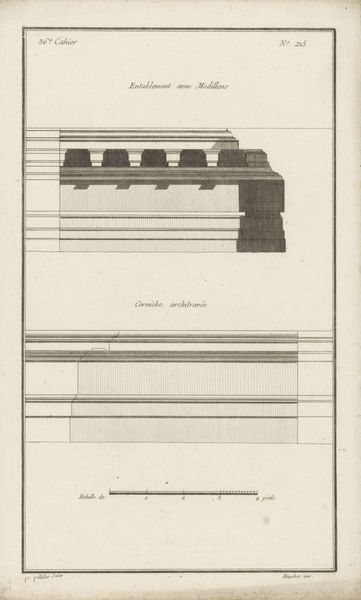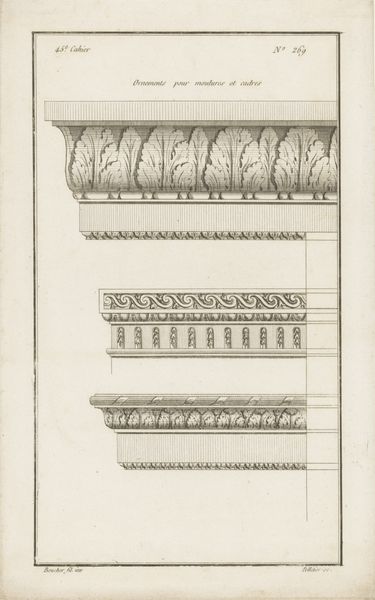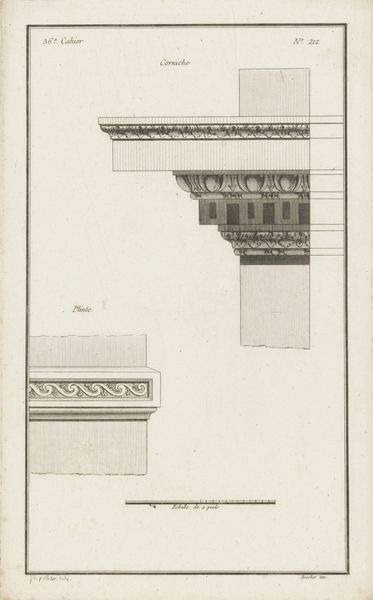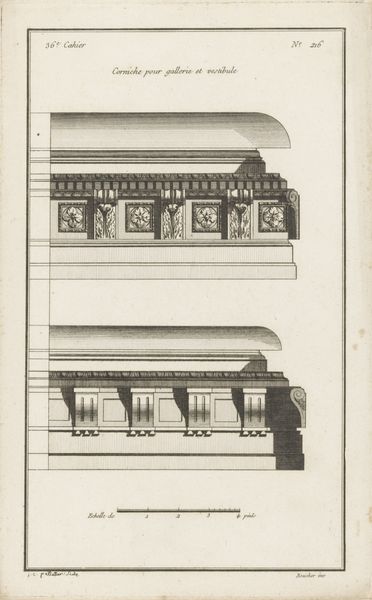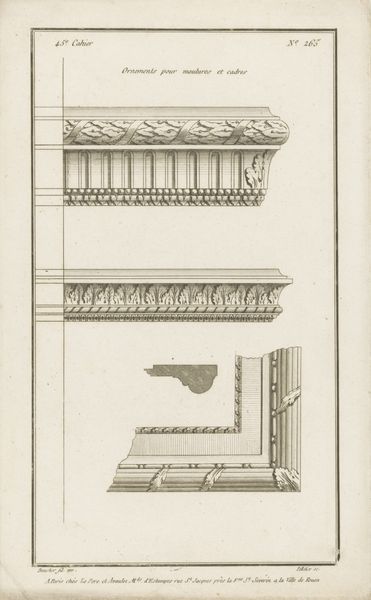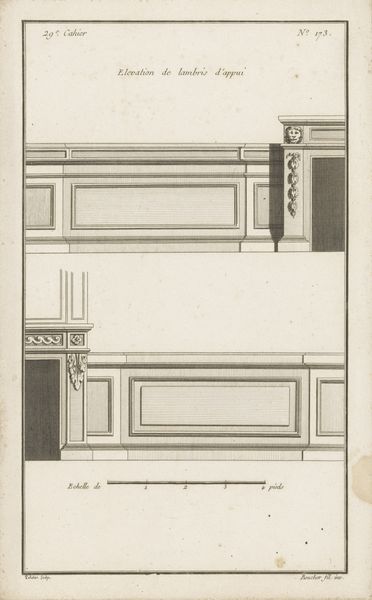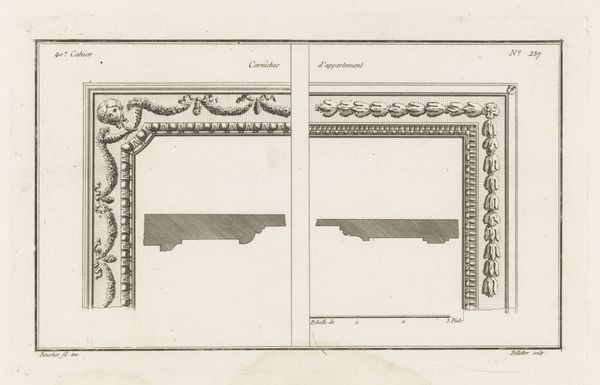
drawing, print, paper, engraving, architecture
#
drawing
#
ink paper printed
# print
#
old engraving style
#
paper
#
geometric
#
line
#
engraving
#
architecture
Dimensions: height 329 mm, width 204 mm
Copyright: Rijks Museum: Open Domain
Curator: Right, let's dive into this intriguing print, “Drie kroonlijsten,” or “Three Cornices,” created sometime between 1772 and 1779 by Jean Pelletier. Editor: Oh, my goodness, it's so precise. It’s oddly calming, almost meditative, with all those meticulously drawn lines. Like a very fancy technical drawing. Curator: Indeed, Pelletier renders these architectural details with astonishing accuracy using ink on paper—it's an engraving. You almost feel as though you could use it to reconstruct a room from the late 18th century. Editor: Absolutely. These cornices were clearly meant for the wealthy, the aristocracy—probably intended to reinforce hierarchies within domestic spaces. I can't help thinking about who wasn't allowed to design these kinds of opulent settings back then. Were there even women architects at that time? Curator: An important question! While Pelletier was part of a very male-dominated world of architectural design, there are examples of female architects much earlier than you think. Though, granted, much fewer, and probably designing interiors, not structuring the core of palaces! Here we see, captured on paper, this interesting tension between strict lines, pure function, and flamboyant ornamentation—all destined for someone's chambre à coucher, no less. Editor: "Chambre à coucher"—it speaks volumes about intimacy and power, doesn’t it? Those details—the little eggs, the floral motifs. It is almost too controlled though. Maybe control is the actual subject. What's the emotional core to Pelletier's intention? Curator: An interesting question. What do you feel it to be? Personally, I see it in his patient skill to elevate basic construction into something artful, to offer choices for those who might imagine inhabiting such a space. It isn't radical art, to be sure, but isn’t design a beautiful act of quiet optimism about how we live, however uneven that playing field might be? Editor: I like that optimism… perhaps the clean lines represent an idealized vision. A way to suggest order and rationality when everything outside is chaotic. Anyway, I look at it differently now. Thanks for the added perspective. Curator: My pleasure! Thank you. It is often what endures that counts more.
Comments
No comments
Be the first to comment and join the conversation on the ultimate creative platform.
